Transfer News
January – March 2024
PFAS Innovation Forum 2024 – a successful dialogue between science, industry, authorities and associations
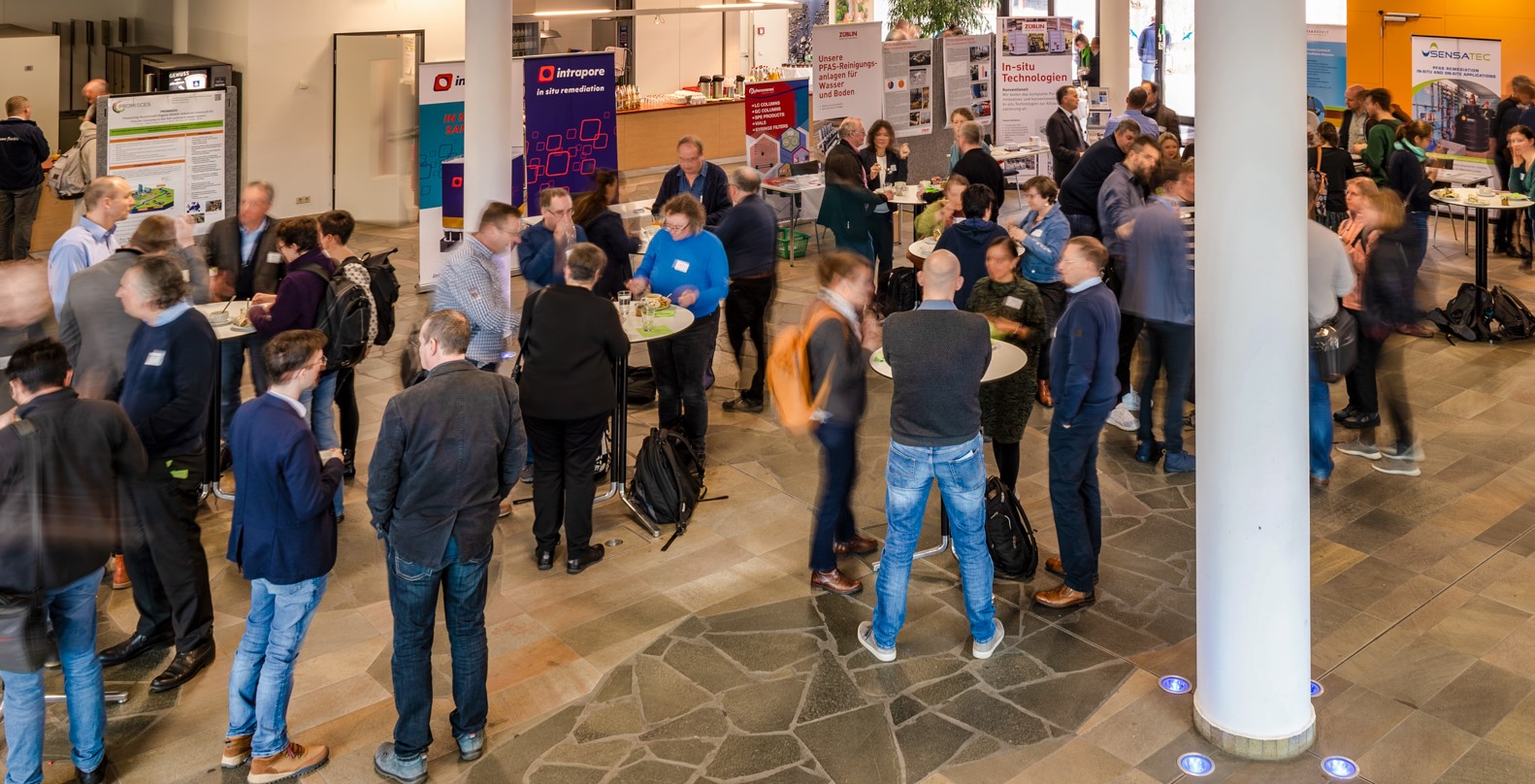 On Monday, 4 March 2024, the UFZ and DECHEMA jointly hosted the Innovation Forum at the KUBUS in Leipzig. This year's topic: "PFAS in the environment - developing solutions together".
On Monday, 4 March 2024, the UFZ and DECHEMA jointly hosted the Innovation Forum at the KUBUS in Leipzig. This year's topic: "PFAS in the environment - developing solutions together".
As the challenges of the so-called "eternal chemical" PFAS are very comprehensive, it was all the more enriching that the 135 participants on this day came from science, industry, associations and authorities and were able to network, exchange ideas and openly discuss the various aspects of this topic.
Before the first two breakout sessions on the topics of "Avoiding emissions - establishing processes and technologies at companies" and "Monitoring and toxicity of PFAS" got underway, Dr. Ulrich Borchers (Head of Water Quality at IWW Zentrum Wasser) introduced the event with a keynote speech on the question of "PFAS in the environment - where do we stand?". After a lunch and networking break, the participants exchanged ideas and discussed possible solutions in two further breakout sessions. The topics: "Remediating PFAS damage cases sustainably and safely" and "PFAS - informing, communicating and regulating". At the end, the participants reported on the results of the four breakout sessions and discussed the next steps together. They then had the opportunity to network and exchange ideas over coffee and cake.
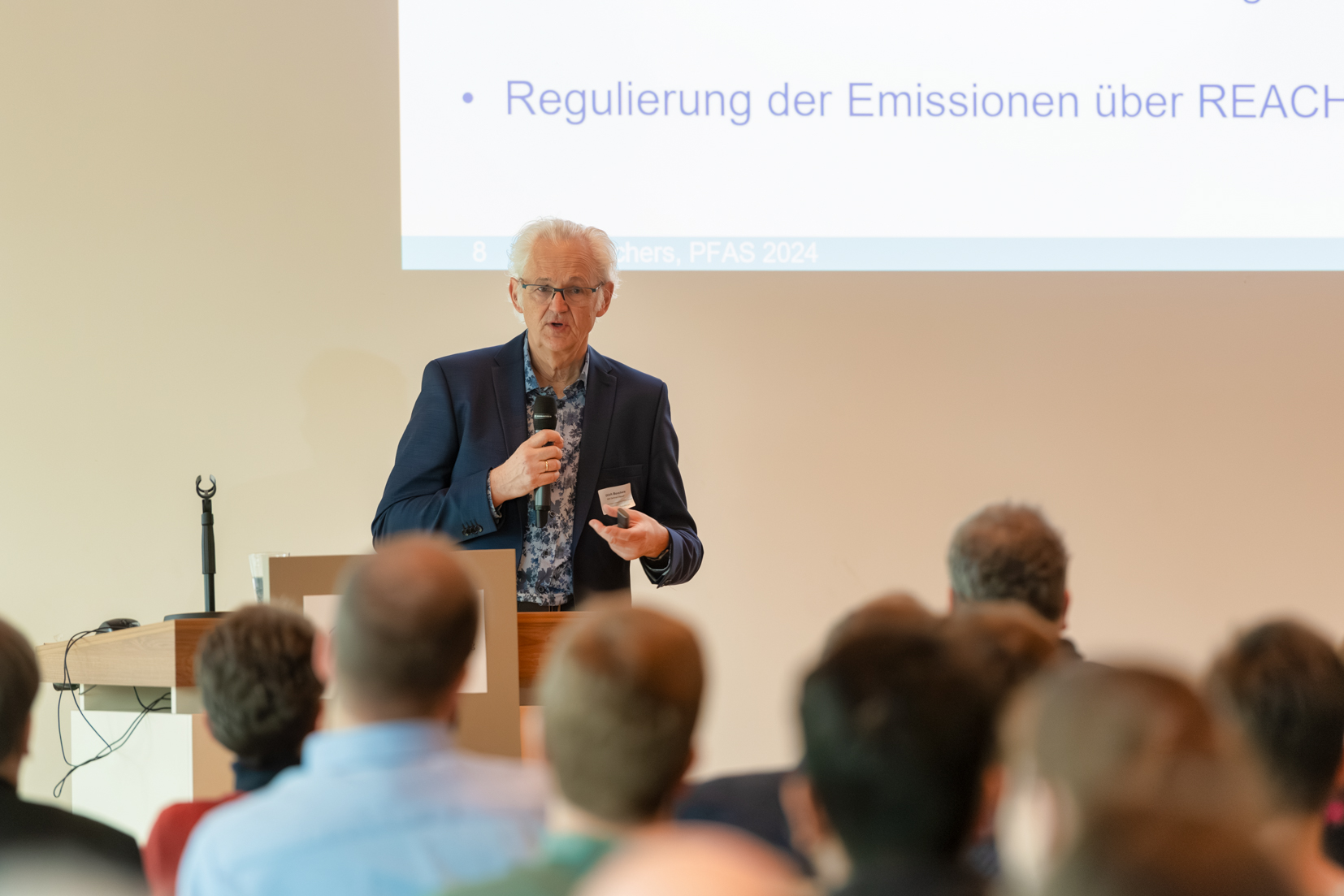 Dr. Ulrich Borchers (Leiter Geschäftsbereich Wasserqualität bei IWW Zentrum Wasser)
Dr. Ulrich Borchers (Leiter Geschäftsbereich Wasserqualität bei IWW Zentrum Wasser)
© A. Künzelmann, UFZ
In their feedback, the participants particularly emphasised the interdisciplinary nature of the event. Open and extraordinarily productive discussions on PFAS unfolded in a relaxed and professional setting. In addition to many ideas, solution approaches, points of criticism and impulses, the unanimous conclusion at the end of the day was that more communication is needed between all those involved to develop recommendations for action and constructive implementation solutions and standardised regulations for Europe or even worldwide in order to avoid location disadvantages.
We can look back with satisfaction on a great event with lively dialogue, many learnings and important networking for the holistic and practical handling of the PFAS problem.
We would like to thank all the participants for coming and joining in the discussions, all the speakers who gave us exciting insights and impulses on this day and Jessica Stubenrauch and Joachim Nöller for hosting the event.
March 2024
Low-cost sensor for measuring hydrogen in the natural gas grid
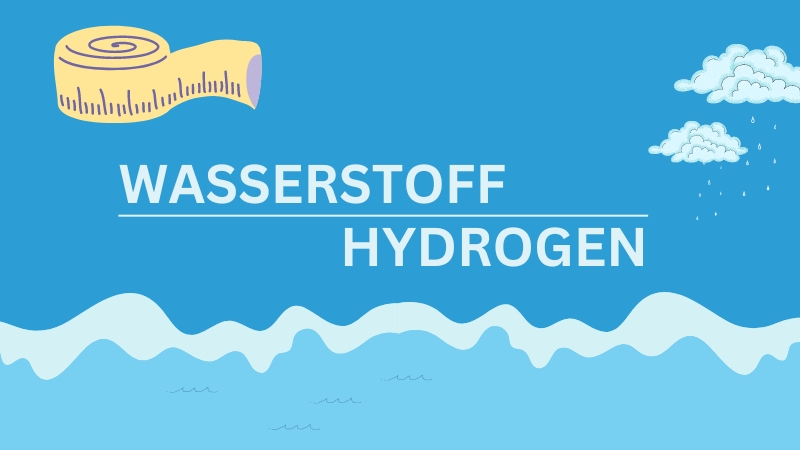 © A. Luckow, UFZ
In their newspaper, researchers from the Leibniz Institute for Catalysis in Rostock, Leipzig University, the Research and Transfer Centre in Leipzig and the UFZ present a very interesting product: the Pt/TiO2 sensor. It enables the selective measurement of hydrogen in the natural gas network. The research team is thus taking a decisive step towards establishing a hydrogen economy. This low-cost sensor fulfils two crucial conditions: (1) it works without oxygen and (2) it is able to detect hydrogen accurately, even in the presence of other gases such as methane.
© A. Luckow, UFZ
In their newspaper, researchers from the Leibniz Institute for Catalysis in Rostock, Leipzig University, the Research and Transfer Centre in Leipzig and the UFZ present a very interesting product: the Pt/TiO2 sensor. It enables the selective measurement of hydrogen in the natural gas network. The research team is thus taking a decisive step towards establishing a hydrogen economy. This low-cost sensor fulfils two crucial conditions: (1) it works without oxygen and (2) it is able to detect hydrogen accurately, even in the presence of other gases such as methane.
The key to the effectiveness of these sensors lies in the innovative combination of the catalytic spillover effect and an impedance measurement in the Pt/TiO2 sensor. This technology not only enables the detection of hydrogen in a wide concentration range, but also the identification of hydrogen in different concentrations.
The potential of the Pt/TiO2 sensor could be of great interest to the hydrogen economy as it enables precise monitoring and control of hydrogen content in large transport and storage infrastructures. This advance could help to further advance the hydrogen economy and establish more sustainable energy systems.
The WTT team is excited about this exciting and promising discovery and wishes the researchers all the best for the future!
Publication:
Roland, U., Hebestreit, A., Taoussanis, A., Eiserbeck, M., Holzer, F., Wotzka, A. & Wohlrab, S. (2023). Cost-effective selective hydrogen sensor based on the combination of catalytic spillover effect and impedance measurement. International Journal of Hydrogen Energy, 48(96), 37550–37562.
https://doi.org/10.1016/j.ijhydene.2022.12.302
March 2024
Phosphorus recovery: Sustainable process successfully tested on a large scale
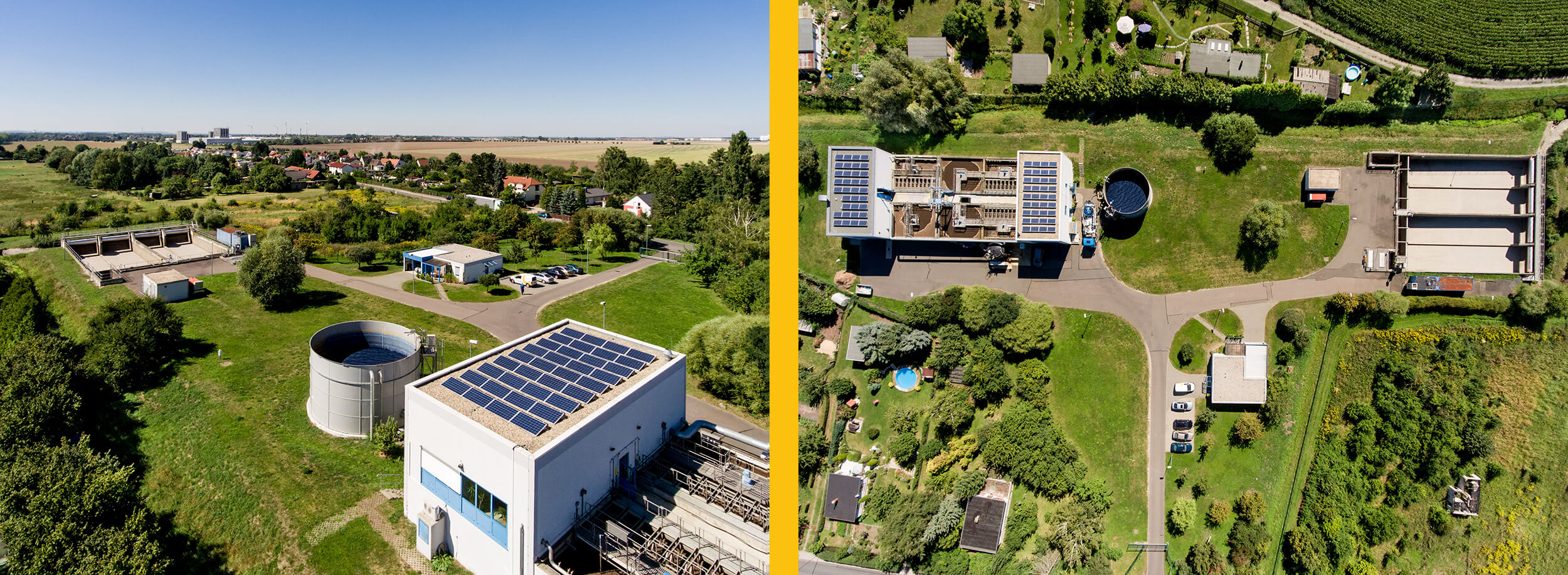 Aerial view of the Markranstädt sewage treatment plant © Leipziger Gruppe
A pioneering project by UFZ researchers Susann Müller, Hauke Harms and Vedran Vučić delivers impressive progress in the recovery of phosphorus (P) from wastewater. The use of brewery yeast on a laboratory scale formed the basis for the development of a pilot-scale process that has now been successfully implemented in a large-scale wastewater treatment plant in Markranstädt.
Aerial view of the Markranstädt sewage treatment plant © Leipziger Gruppe
A pioneering project by UFZ researchers Susann Müller, Hauke Harms and Vedran Vučić delivers impressive progress in the recovery of phosphorus (P) from wastewater. The use of brewery yeast on a laboratory scale formed the basis for the development of a pilot-scale process that has now been successfully implemented in a large-scale wastewater treatment plant in Markranstädt.
Phosphorus recovery in Markranstädt
The wastewater treatment plant has drawn up a detailed phosphorus balance sheet based on two important threshold values. On the one hand, the economic efficiency threshold for P recovery of 0.05 kg/m3 free phosphorus was taken into account. On the other hand, the threshold value of the German Sewage Sludge Ordinance was considered, which prescribes P recovery for sewage treatment plants with a P content in the dry matter (DM) of the sewage sludge of 20 gP/kgDM or more. By focussing on these defined threshold values, return and surplus sludge were identified as particularly suitable process streams for P recovery. The research team has established an efficient 3-stage process in a BioP-Rec module.
Sustainable fertiliser with BioP-Rec module
In the first stage, a solution with 0.051 kg/m3 free P was produced from the phosphorus-rich water phase of the return sludge. In just three hours, the low-P brewery yeast achieved an impressive phosphorus uptake of 77.56% in the second stage. The final third stage concentrated the yeast within one hour to produce yeast sludge as a high-quality fertiliser product.
The WTT team is delighted with this important step towards sustainable resource utilisation and wishes the researchers continued success and all the best!
Publication:
Vučić, V., Harms, H. & Müller, S. (2023). Biological recovery of phosphorus (BIOP-REC) from wastewater streams using brewer's yeast on pilot-scale. Engineering in Life Sciences. https://doi.org/10.1002/elsc.202300208
February 2024
New review on the research field of applied biofilms
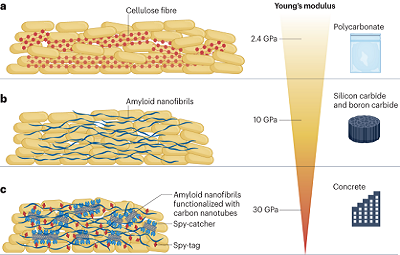 © Bühler, Philipp, Ulber & Gescher, 2023 / UFZ
The usability of biofilms has been gaining more and more attention in recent years. This is partly due to the growing demand for bio-based and sustainable solutions in the broad field of scientific research.
© Bühler, Philipp, Ulber & Gescher, 2023 / UFZ
The usability of biofilms has been gaining more and more attention in recent years. This is partly due to the growing demand for bio-based and sustainable solutions in the broad field of scientific research.
With their paper "Beneficial applications of biofilms", researchers Katja Bühler, Johannes Gescher, Laura-Alina Philipp, and Roland Ulber address the rapid growth of the research field and provide a systematic overview of research topics, challenges, applications and future developments of useful and applied biofilms.
The advantages of biofilms – adhesion and robustness
Biofilms, which consist of non-pathogenic organisms, offer a number of advantages in the production of fine and bulk chemicals. For example, they enable biocatalysts to develop their metabolic adaptation and optimisation over time. Biofilms also have good adhesion properties. This enables their use in continuous systems. The robustness of organisms growing in biofilms, together with the possibility of decoupling growth from catalytic activity, opens up a wide range of possibilities.
With all the potential and interest that the useful biofilms bring and attract, the UFZ research team's paper is a clear enrichment for the field of research.
The WTT team is delighted with this great work and wishes them all the best for the future!
Publication:
Bühler, K., Gescher, J., Philipp, L. & Ulber, R. (2023). Beneficial applications of biofilms.
Nature Reviews Microbiology. https://doi.org/10.1038/s41579-023-00985-0
February 2024
Exclusive 'Where to Play" Certification for the UFZ Tech Transfer team
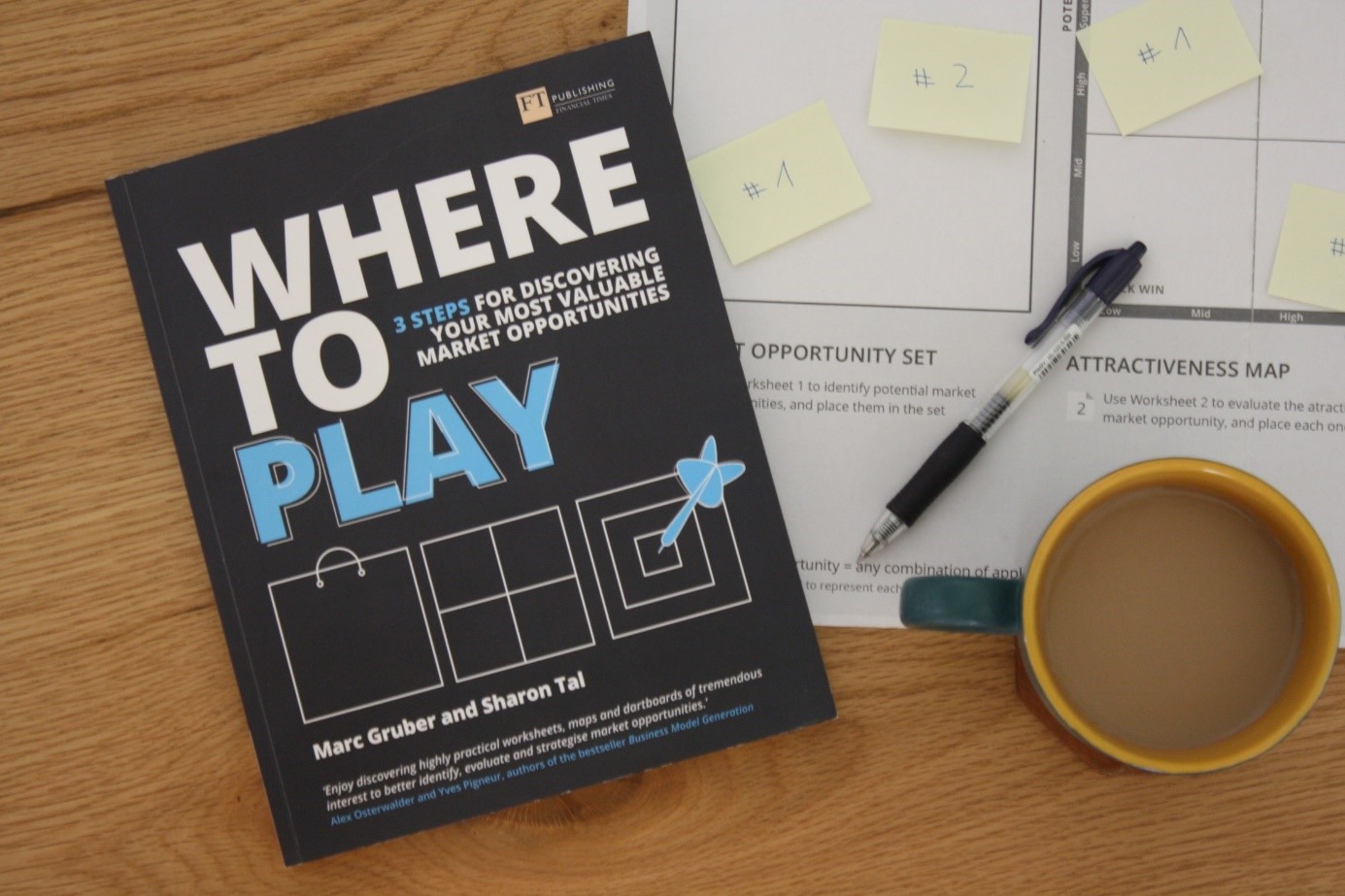 One of the major challenges in realising the full potential of an innovation lies in understanding the markets that it can address. ‘Which market should we focus on?’ is likely the most critical question that should be asked when bringing innovations to the market. Yet, identifying evaluating and prioritizing different market opportunities is an overwhelming task.
One of the major challenges in realising the full potential of an innovation lies in understanding the markets that it can address. ‘Which market should we focus on?’ is likely the most critical question that should be asked when bringing innovations to the market. Yet, identifying evaluating and prioritizing different market opportunities is an overwhelming task.
To overcome this challenge, Dr. Sharon Tal and Prof. Marc Gruber studied and worked with hundreds of start-ups to create the Market Opportunity Navigator. This simple and solid framework helps entrepreneurs and innovators identify, evaluate and prioritise market, set their strategic focus and move forward in the right direction with confidence.
The certification programme at the UFZ was conducted by Dr. Sharon Tal and covered three essential steps, namely how to:
- identify valuable market opportunities stemming from the venture's core competences,
- evaluate possible market opportunities in a comprehensive manner, to reveal the most attractive options and finally,
- design a smart portfolio around the chosen market opportunity, in order to consciously avoid a lock-in and to remain agile
The training was based on a hands-on approach: by applying the method to an innovative technology of the UFZ. The main objective of this certification was to add an important tool to the tech transfer toolbox the at the UFZ. At the end of the program an exclusive certification was handed over to the team indicating that the transfer team members are certified trainers for the method. Dr. Sharon Tal and Prof. Marc Gruber, solely provide this training and certification worldwide as creators of the tool and owners of the IP.
At the UFZ, the Tech Transfer team supports scientists in developing and protecting new ideas and products and bringing them to market. Our team of experts help exploit, valorise and commercialise research findings, build and maintain relationships with cooperation partners and accompany scientists on their entrepreneurial journey.
Contact us for more information: wtt@ufz.de
About the Lecturer
Dr. Sharon Tal is the co-creator of the Market Opportunity Navigator and a co-author of the complementing book 'Where to Play'. She helps entrepreneurs and managers identify, evaluate and prioritize market opportunities for their business. Sharon is a co-founder and former executive director of the Entrepreneurship Center at the Technion, Israel Institute of Technology, and a senior lecturer on marketing and entrepreneurship. She runs courses and workshops in accelerators and universities around the world, and serves as a mentor in many organizations that aim to help budding entrepreneurs. Sharon has over a decade of experience in marketing, and in strategic consulting. Her PhD research looked at market entry decisions of hundreds of startups and its consequences on firm performance and flexibility.
Sharon developed The Market Opportunity Navigator together with Prof. Marc Gruber – VP for Innovation at EPFL (Switzerland) and a world leading researcher in technology entrepreneurship – based on hundreds of cases that they collected during their practical and academic work.
January 2024
Researchers from Aachen and Leipzig have developed a new design for the flexible methanisation of hydrogen
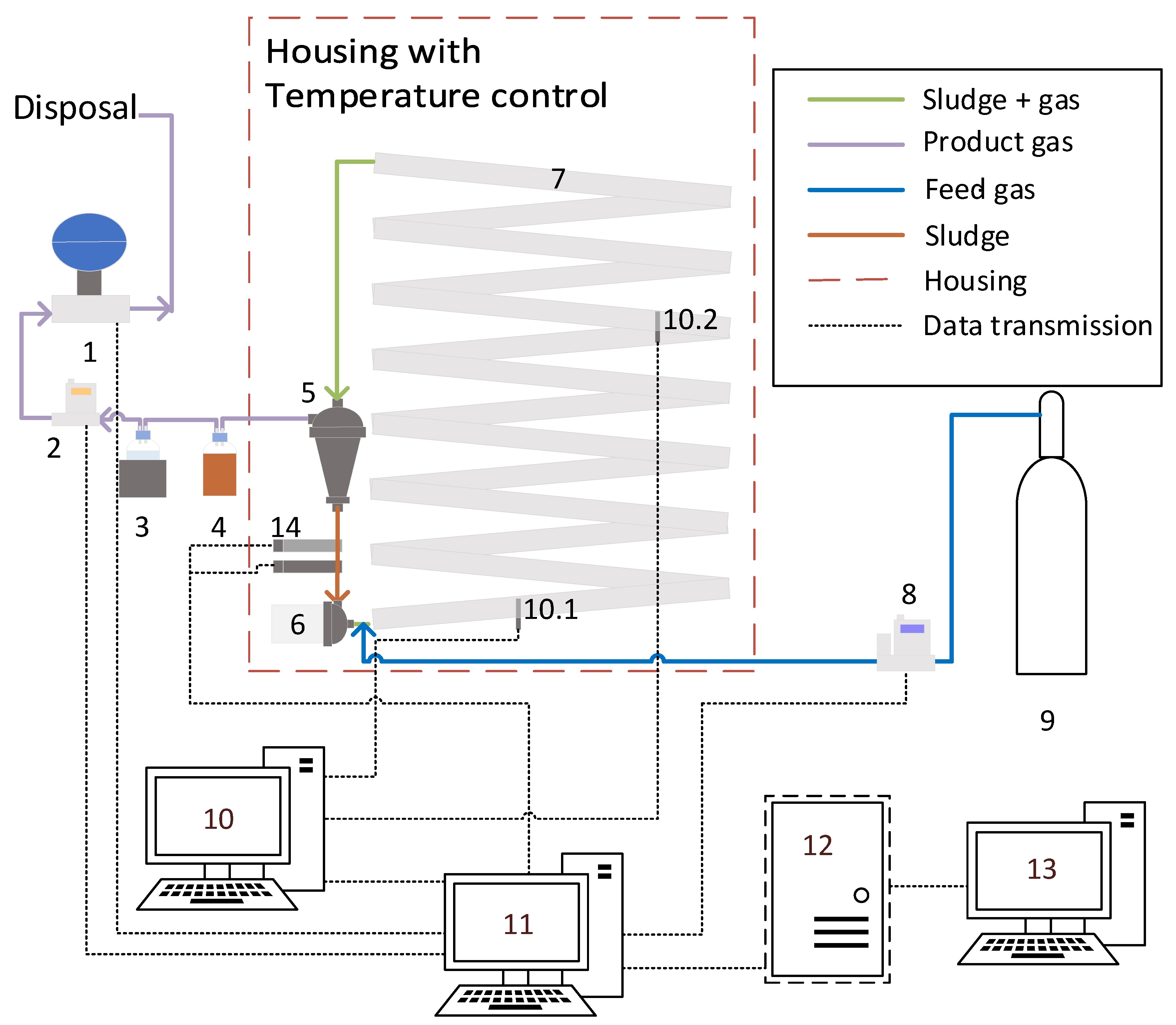 © K. Hoffstadt et al. (2023)
The storage of renewable energy is key to the success of the energy transition. It is perhaps the biggest construction site on the way to a holistic transition to renewable energy.
© K. Hoffstadt et al. (2023)
The storage of renewable energy is key to the success of the energy transition. It is perhaps the biggest construction site on the way to a holistic transition to renewable energy.
Power to Gas
The researchers around Kevin Hoffstadt (NOWUM-Energy Institute) were able to tackle precisely this challenge in their experimental study and have delivered promising results. Their research project is based on the power to gas approach. In a nutshell, this involves converting the surplus energy generated during the production of energy from water into chemical energy, e.g. hydrogen. The resulting hydrogen is often methanised so that it can be efficiently fed into the gas grid.
Flexible methanisation using a plug-flow reactor
The methanisation process is still a challenge, as it is not possible in all reactors. Hoffstadt et al. have therefore developed a so-called plug-flow reactor that enables the flexible methanisation of hydrogen on a laboratory scale. Simulations and experiments show promising results for the laminar flow and a gas content of 29%. The reactor which has a loop design with 14m length, 50mm width shows good properties for flexible methanisation and will be tested further.
The WTT team is very excited to see what further results the research group will deliver and wishes them all the best and every success!
Publication:
Hoffstadt, K., Cheenakula, D., Nikolausz, M., Krafft, S., Harms, H. & Kuperjans, I. (2023). Design and construction of a new reactor for flexible biomethanation of hydrogen. Fermentation, 9(8), 774. https://doi.org/10.3390/fermentation9080774
January 2024
Indoor air quality: CFD models optimise radon reduction in homes
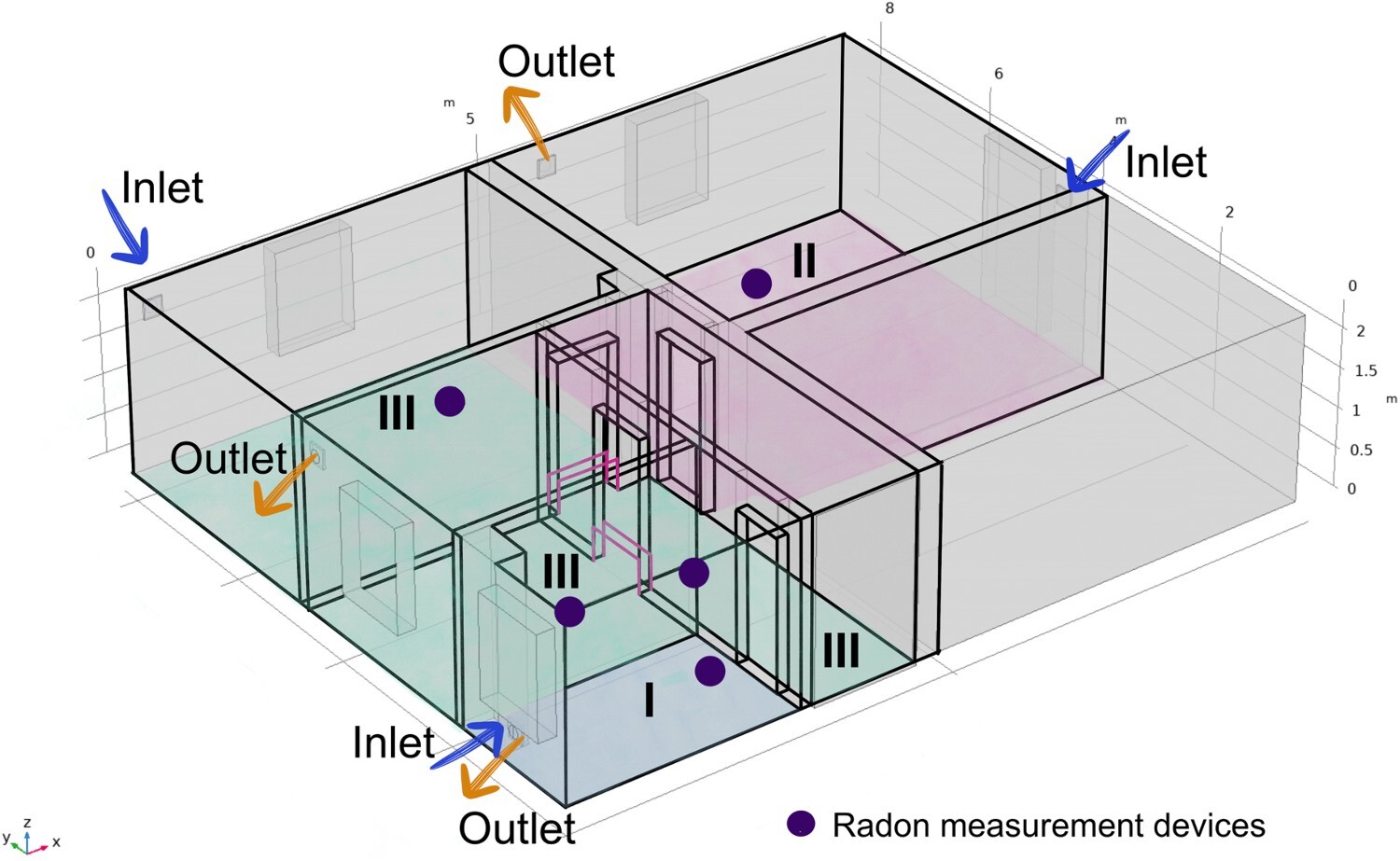 © Altendorf et al.
The study conducted by the team of UFZ and TUBAF-UFZ researchers led by Prof. Holger Weiß, Department of Environmental Informatics, focuses on techniques to reduce indoor radon-222 activity concentrations and shows how true-to-scale 3D CFD models can predict the development of complex ventilation experiments.
© Altendorf et al.
The study conducted by the team of UFZ and TUBAF-UFZ researchers led by Prof. Holger Weiß, Department of Environmental Informatics, focuses on techniques to reduce indoor radon-222 activity concentrations and shows how true-to-scale 3D CFD models can predict the development of complex ventilation experiments.
Promising experiments in an unoccupied flat
In experiments carried out in an unoccupied flat on the ground floor of a block of flats in Bad Schlema (Saxony, Germany), "100% cross ventilation" was investigated in particular. This led to room-specific reduction of the radon concentration [Rn] from around 3000 to 300 Bq/m³. The results of the ventilation experiments were interpreted quantitatively by a CFD model using a k-ε-turbulent steady-state flow model and a decentralised ventilation system. The model was coupled with a transient transport model simulating the indoor [Rn] concentration.
Analysis of the results
In a first approach, the model overestimated the drop at the beginning of the experiment and at steady state. By adjusting the model parameters, such as the inflowing radon and the inlet velocity, the model results agreed well with the experimental values. These promising study results show the potential of CFD modelling as an effective tool to evaluate and optimise ventilation systems to effectively reduce elevated [Rn] levels.
The study was conducted as part of a ZIM-funded joint project. Partners of the UFZ in the project are SARAD GmbH in Dresden, inVENTer GmbH in Löberschütz, Bergsicherung Schneeberg GmbH & Co. KG, Gebäude- und Wohnungsverwaltung GmbH Schlema, Staatliche Betriebsgesellschaft für Umwelt und Landwirtschaft in Chemnitz and the Saxon Radiation Protection Authority LfULG in Dresden.
The WTT team looks forward to the promising study results and wishes the research team continued success and all the best in implementing the results!
Publication:
Altendorf, D., Wienkenjohann, H., Berger, F., Dehnert, J., Grünewald, H., Naumov, D., Trabitzsch, R., Weiß, H. (2023). Successful reduction of indoor radon activity concentration via cross-ventilation: experimental data and CFD simulations. Isotopes in Environmental and Health Studies, 1–16.
https://doi.org/10.1080/10256016.2023.2282686
January 2024
Efficient phenol degradiation with microbial electrochemistry
 © Dai et al, UFZ
The results of the UFZ research team consisting of Shixiang Dai, Falk Harnisch, Micjel Chávez Morejón, Nina Sophie Keller, Benjamin Korth and Carsten Vogt indicate that microbial electrochemical technologies can be successfully used for the degradation of phenol. Previous studies provided contradictory results and left uncertainties regarding phenol degradation under strictly anaerobic conditions with anodes as sole electron acceptors.
© Dai et al, UFZ
The results of the UFZ research team consisting of Shixiang Dai, Falk Harnisch, Micjel Chávez Morejón, Nina Sophie Keller, Benjamin Korth and Carsten Vogt indicate that microbial electrochemical technologies can be successfully used for the degradation of phenol. Previous studies provided contradictory results and left uncertainties regarding phenol degradation under strictly anaerobic conditions with anodes as sole electron acceptors.
In this study, state-of-the-art liquid chromatography and gas chromatography-mass spectrometry were used to investigate anaerobic phenol degradation. The results provide convincing evidence for the purely anaerobic degradation of phenol, with intermediates such as benzoic acid, 4-hydroxybenzoic acid and glutaric acid being identified. Remarkably, no typical intermediates of aerobic phenol degradation were found.
Impressive results
Single-chamber reactors (anode potential +0.4 V vs. SHE) showed an impressive phenol degradation rate of 3.5 ± 0.2 mg/L/day. Two-chamber reactors showed similarly promising results at anode potentials of +0.4 V (3.6 ± 0.1 mg/L/day) and +0.2 V (2.6 ± 0.9 mg/L/day). The research results also indicate that the reactor configuration influenced the microbial community, which could lead to different ratios of phenol consumers and microorganisms feeding on the degradation products.
This discovery could open the door to environmentally friendly wastewater treatment methods and represent a sustainable advance in environmental technology.
The WTT team is looking forward to further research work by the team and wishes them every success!
Publication:
Dai, S., Harnisch, F., Morejón, M. C., Keller, N., Korth, B. & Vogt, C. (2024). Microbial electricity-driven anaerobic phenol degradation in bioelectrochemical systems. Environmental Science and Ecotechnology, 17, 100307. https://doi.org/10.1016/j.ese.2023.100307
January 2024
